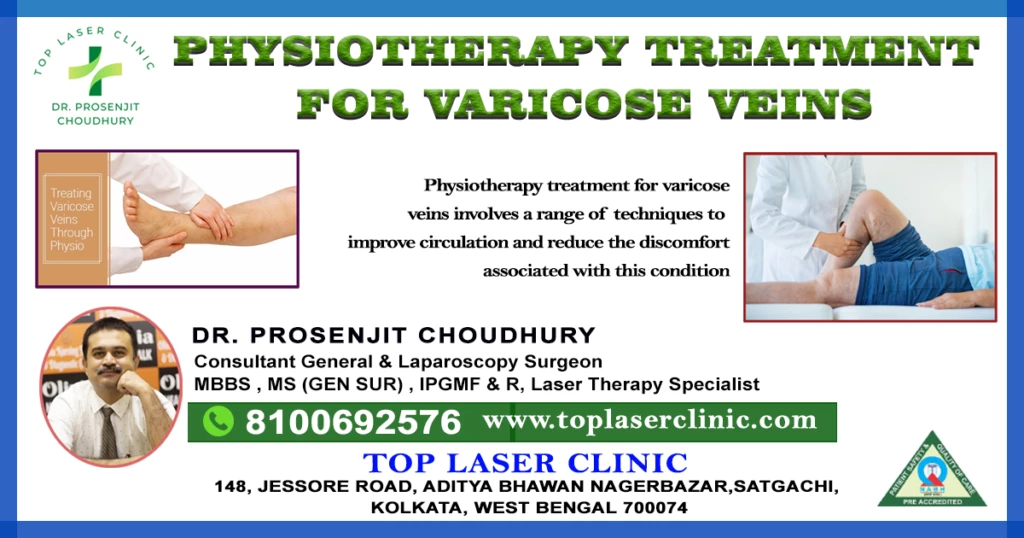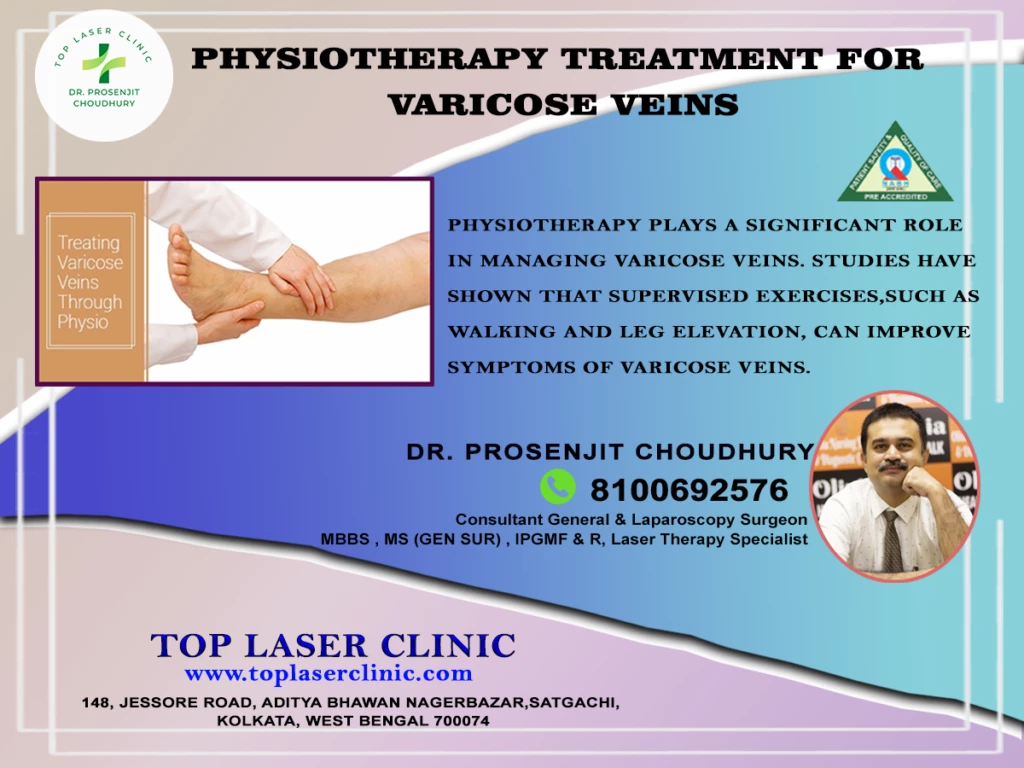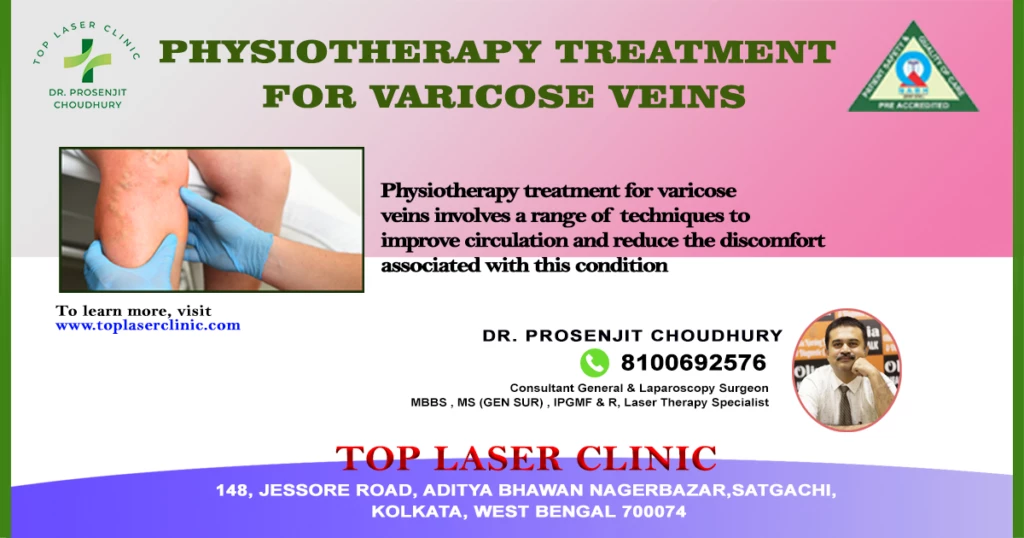
Physiotherapy treatment for varicose veins :
Varicose veins are a medical condition that affects many people, causes discomfort, and can be very aesthetically displeasing. The demand for varicose veins treatment has increased as patients have become more aware that their “tired, aching” legs no longer need to be tolerated. While there are several treatment options for varicose veins, physiotherapy techniques have proven to be effective in managing and even treating the condition. Physiotherapy can play a vital role in managing varicose veins, utilizing a combination of exercises, compression therapy, and manual techniques to reduce symptoms and improve blood flow.
In order to develop an effective varicose veins treatment plan, it is important to first understand the condition. Varicose veins are enlarged and twisted veins that usually occur in the legs. They occur when blood does not flow properly through the veins, causing them to swell and bulge. The causes of varicose veins are not fully understood, but they are typically influenced by genetics, age, gender, pregnancy, and lifestyle factors such as prolonged standing or sitting. Symptoms of varicose veins include pain, swelling, aching and heaviness in the legs.
Physiotherapy plays a significant role in managing varicose veins.Studies have shown that supervised exercises, such as walking and leg elevation, can improve symptoms of varicose veins. In addition, compression therapy with stockings or wraps can also be used to reduce edema and improve blood flow.

Physiotherapists may also use techniques such as manual lymphatic drainage (MLD is a specialized massage technique that aims to stimulate lymphatic flow and reduce swelling. While primarily used for lymphedema, MLD can also be beneficial in managing associated swelling and discomfort in varicose veins) and myofascial release to manage symptoms of varicose veins. Overall, a physiotherapy treatment plan for varicose veins may include exercises to improve circulation and reduce symptoms, compression therapy with stockings or wraps to reduce swelling and improve blood flow, as well as manual techniques to manage symptoms such as pain and discomfort.
However, it is important to note that physiotherapy techniques should always be used in conjunction with other treatment options such as ultrasound-guided foam sclerotherapy, Endovenous laser treatment (EVLT) and radiofrequency ablation for more effective management of varicose veins. While the quality of evidence to recommend a specific compression strategy following treatment for varicose veins is low, research suggests that compression stockings or wraps should be used after surgical or interventional treatment with pressures of >20 mm Hg for maximum efficacy.
It is important to note that varicose veins do not always require treatment, and in some cases can be managed with compression stockings or lifestyle changes alone . When developing a treatment plan for varicose veins, it is essential to understand the condition and its causes.
Physiotherapy treatment for varicose veins involves a range of techniques to improve circulation and reduce the discomfort associated with this condition. Supervised exercises have been shown to improve symptoms of varicose veins, making physiotherapy a viable treatment option even for elderly patients.

Studies have shown that supervised exercises can improve symptoms of varicose veins, and walking has been suggested as an effective physiotherapy to slow their progression. It is important to note that varicose veins can be caused by a variety of factors, including genetics and lifestyle choices. However, regardless of the cause, physiotherapy can help relieve the symptoms. In addition to physiotherapy, there are other treatment options available for varicose veins including conservative management with compression hosiery and interventional procedures such as ultrasound-guided sclerotherapy, junction ligation with or without vein stripping, endo-venous laser ablation and radiofrequency ab lation.
It is essential to have expertise in venous anatomy and its atypical variant forms for interventional treatment modalities to ensure the most effective results. When it comes to physiotherapy treatment specifically, the CEAP classification [Clinical (C), Etiological (E), Anatomical (A), and Pathophysiological (P)] is followed in classifying varicose veins.